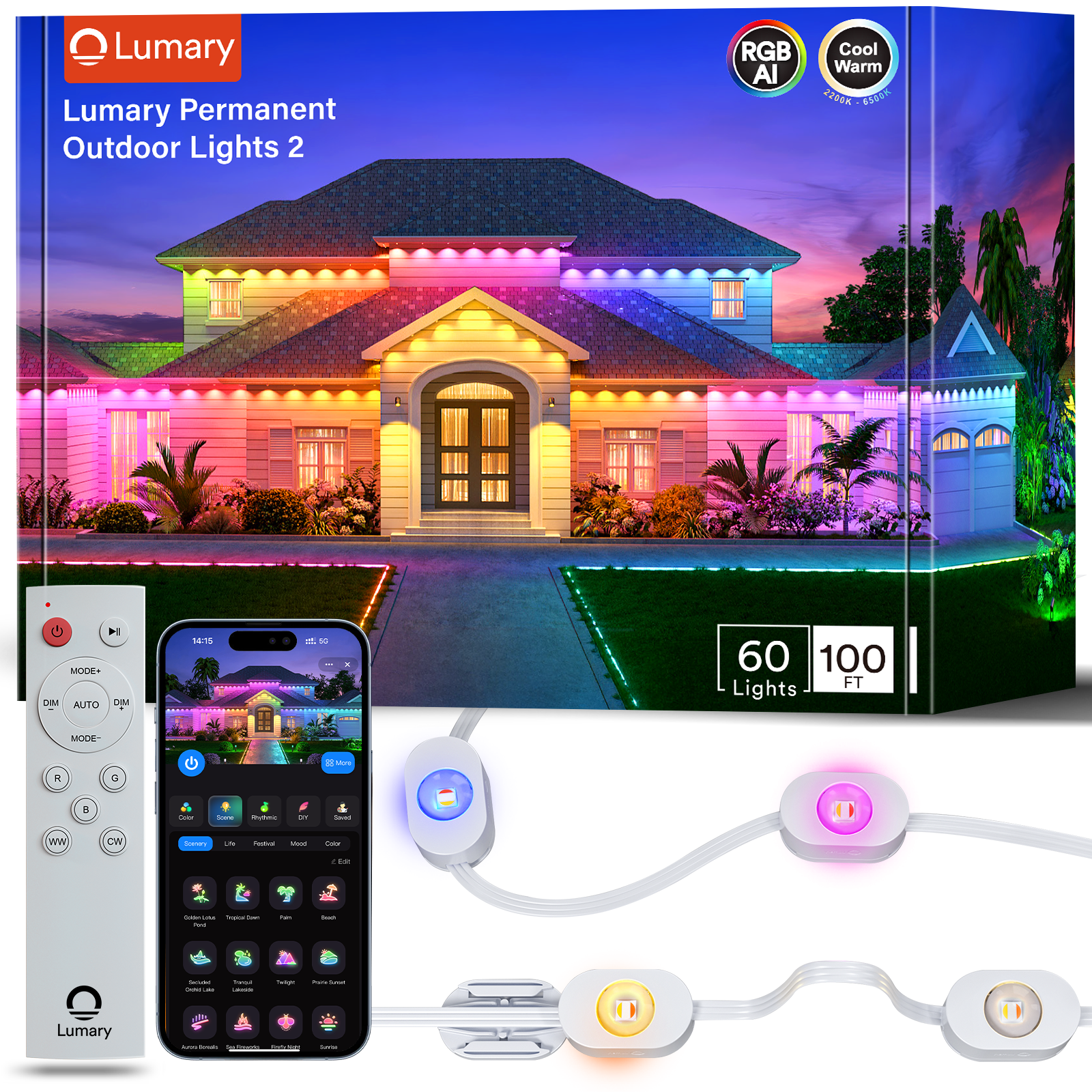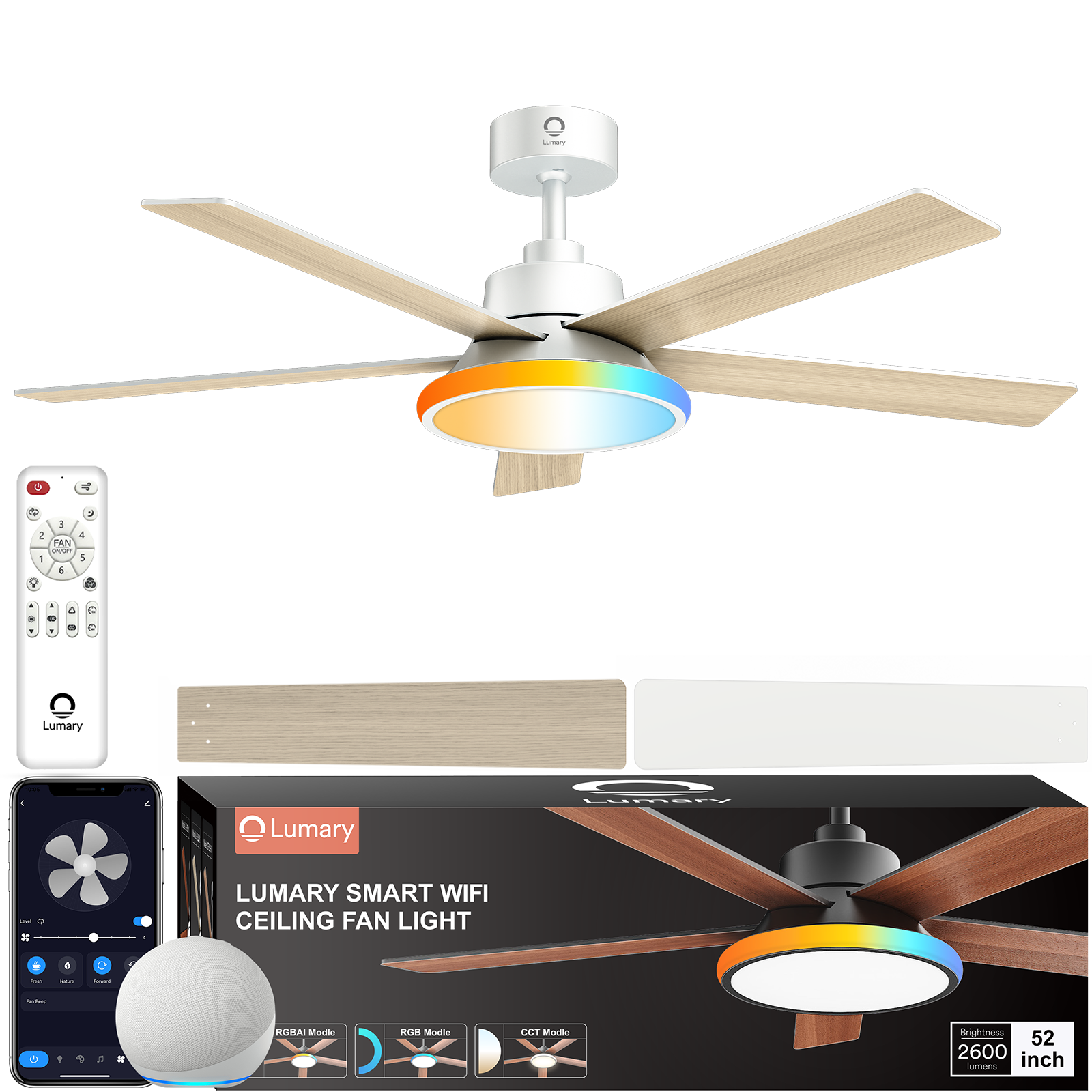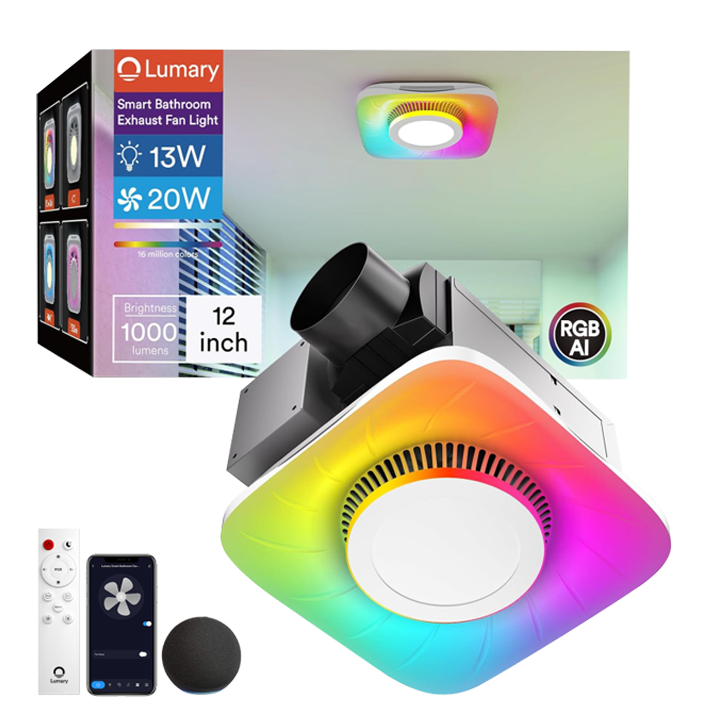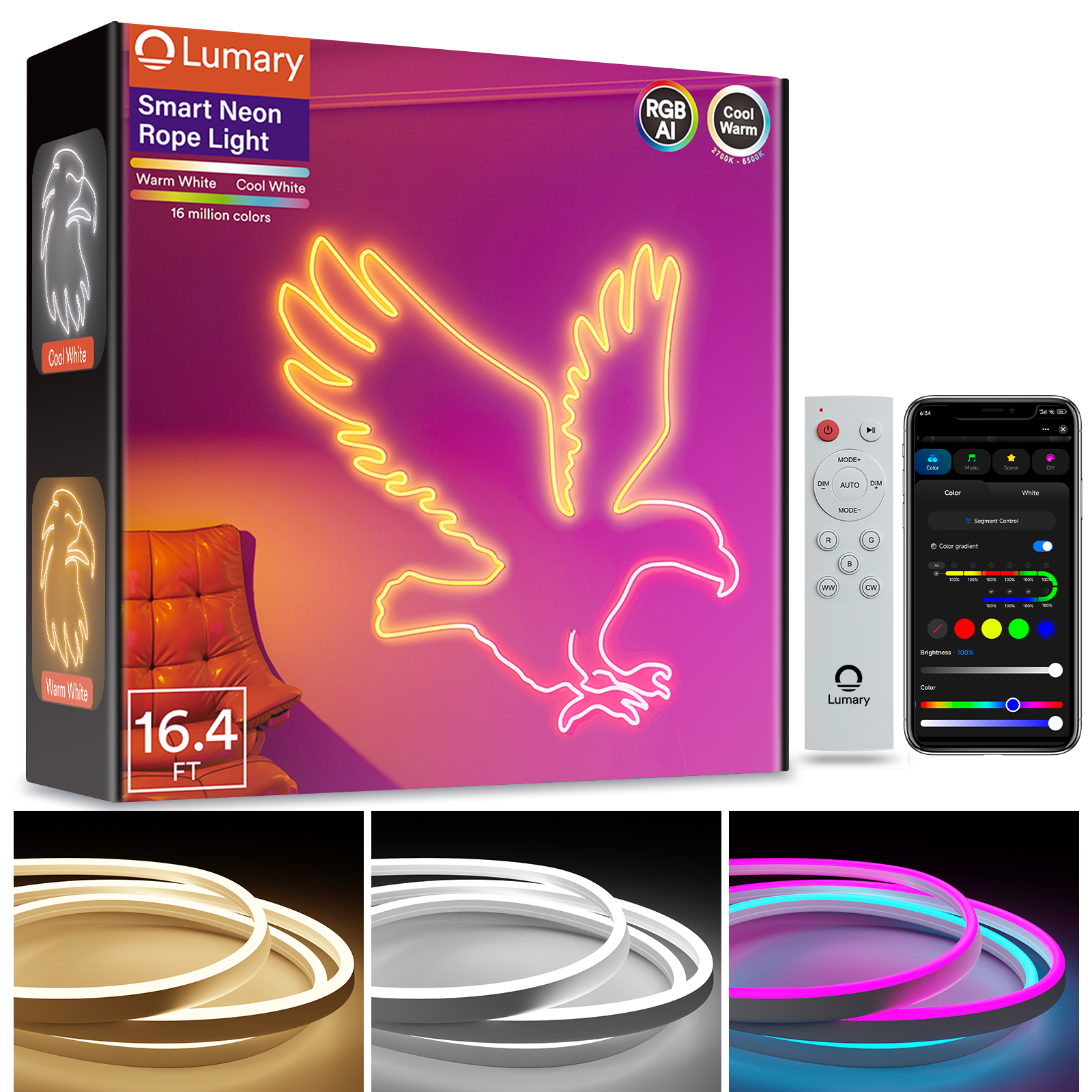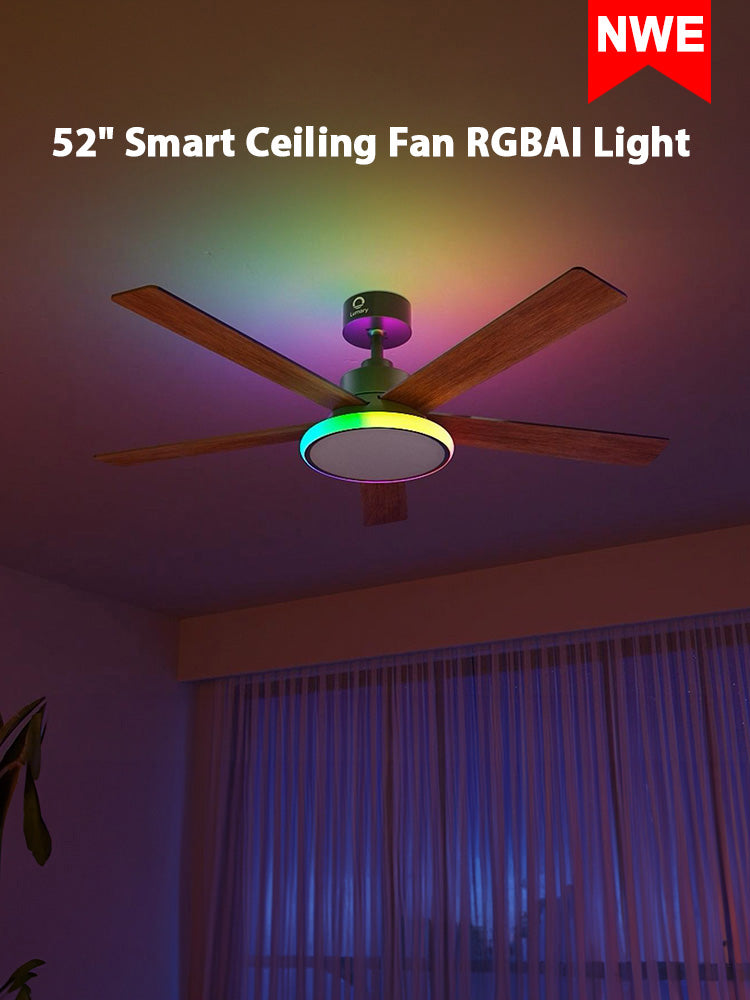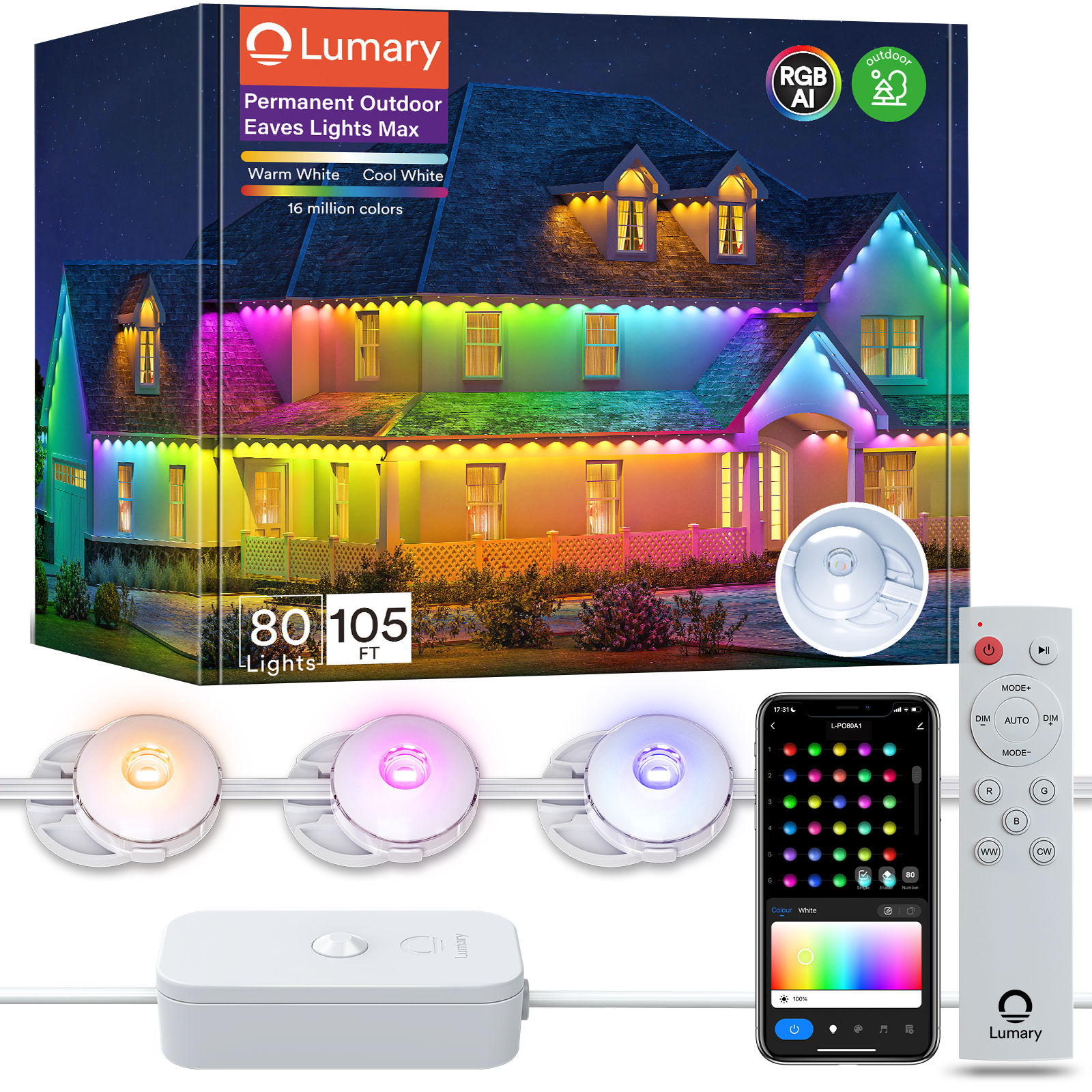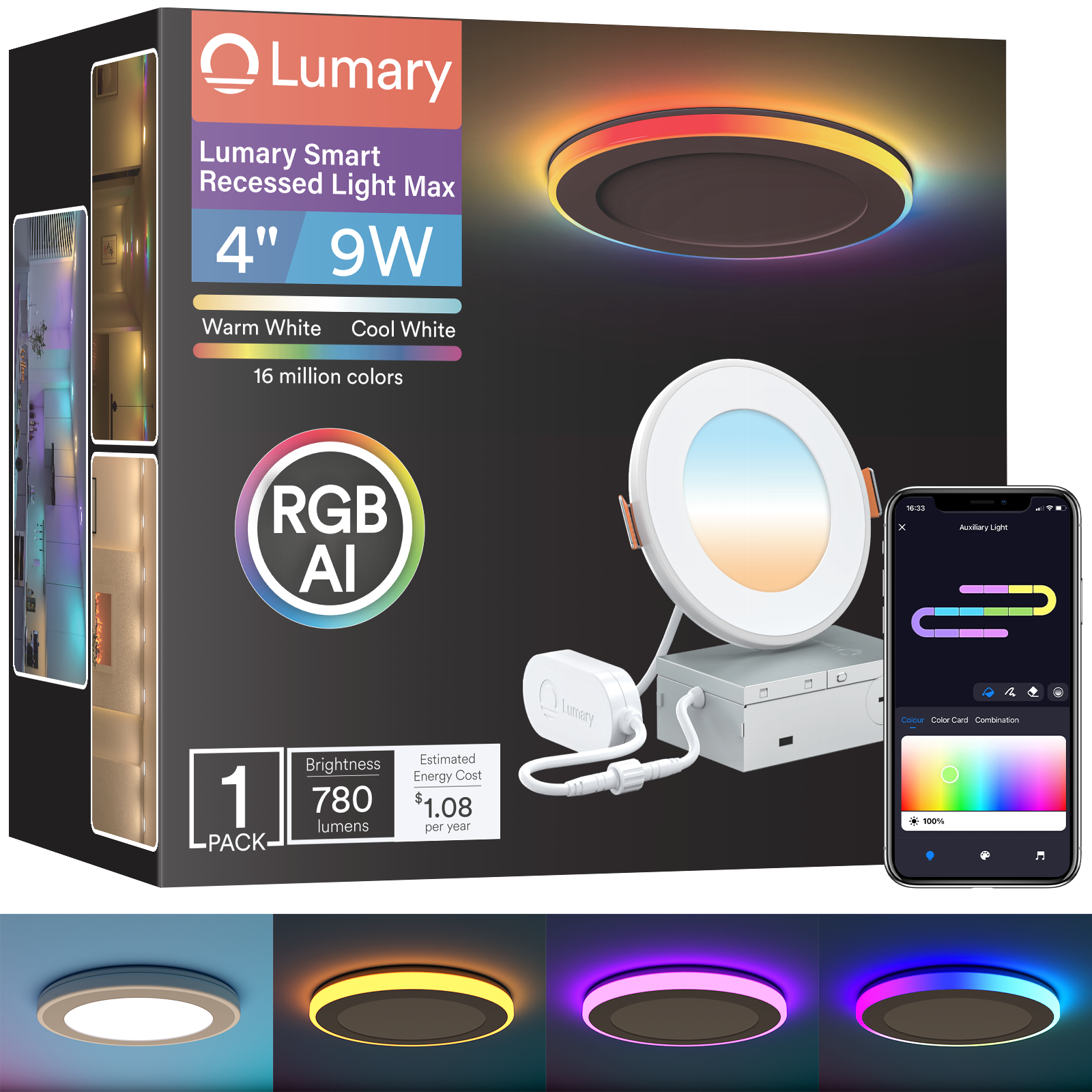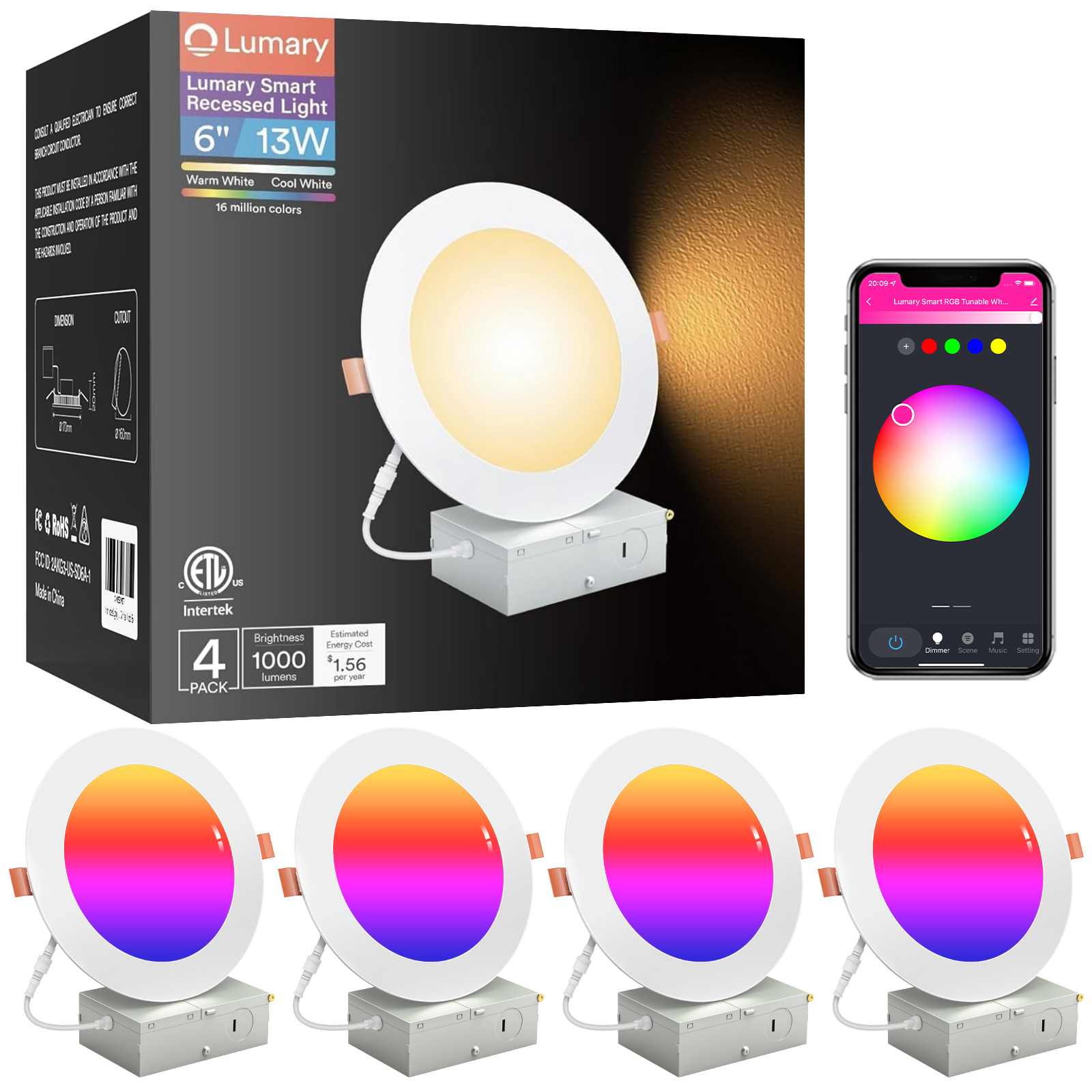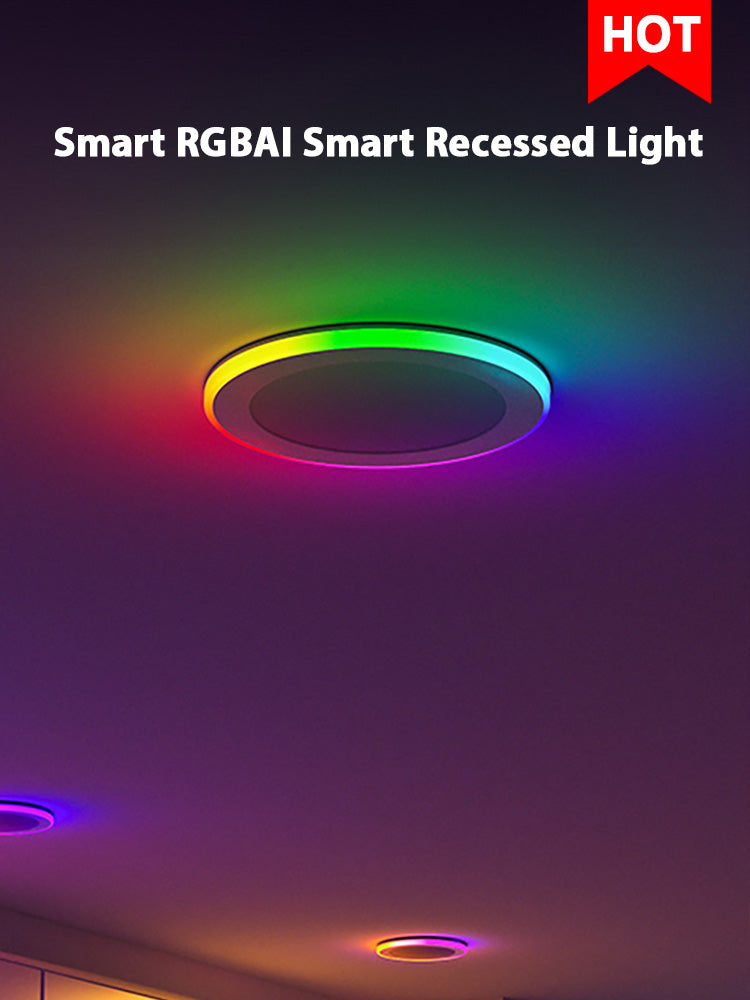You know the struggle of a hot summer night or a stuffy living room where air just won’t move. The right ceiling fan changes that. It cools your space, keeps air flowing, and helps you feel comfortable without cranking up the AC. In fact, using a ceiling fan with your HVAC system can cut energy use by up to 30%. With only 6 watts of power, an indoor ceiling fan can move 2 cubic meters of air each second—making it 100 times more efficient than air conditioning for personal cooling. You can even enjoy a wider comfort range in your bedroom or living room, as the extra airflow helps you feel cooler by nearly 2°C.
|
Statistic Description |
Value |
Unit |
|---|---|---|
|
Energy savings using ceiling fans |
Up to 30 |
% |
|
Air volume moved |
2 |
m³/s |
|
Power consumption |
6 |
Watts |
|
Cooling efficiency compared to AC |
100x |
times |
|
Extension of thermal comfort boundary |
1.8 |
°C |
You deserve a cool, comfortable home. The best ceiling fans make it easy.

Key Takeaways
-
Ceiling fans help save energy and keep your home cool. They move air well, so you can use your AC less and pay lower bills. - Pick a fan size that matches your room. Use small fans in small rooms. Use big fans with wide blades in large rooms. - Find fans with quiet motors and different speed settings. Fans with reversible blades help you stay comfy all year. - Smart fans are easy to control with remotes, phones, or voice commands. They make life easier and help save energy. - Clean your fan often and install it the right way. This helps your fan work well and keeps your home's air clean.
Top Picks Summary
Choosing the right ceiling fans can transform your home into a cool and comfortable retreat. Here’s a quick guide to the best ceiling fans for every space and need, so you can enjoy better airflow, energy savings, and quiet operation all year.
Best Ceiling Fans Overall
You want a ceiling fan that delivers strong airflow, energy efficiency, and quiet operation. Top-rated models stand out for their reliable motors, remote controls, and reversible blades. Consumer tests show that fans with high airflow (measured in CFM) and adjustable speeds keep your rooms cool and comfortable. Fans with DC motors run quieter and use less energy, making them a smart choice for any home.
|
Model Name |
Highlights |
Pros |
Cons |
|---|---|---|---|
|
Model A |
Modern style, dimmable lighting |
Remote, flexible mounting |
No pull chain |
|
Model B |
Built-in LED, reversible motor |
Nice design, LED included |
No pull chain |
|
Model C |
Outdoor compatible, flush mount |
Customizable, quiet |
No pull chain |
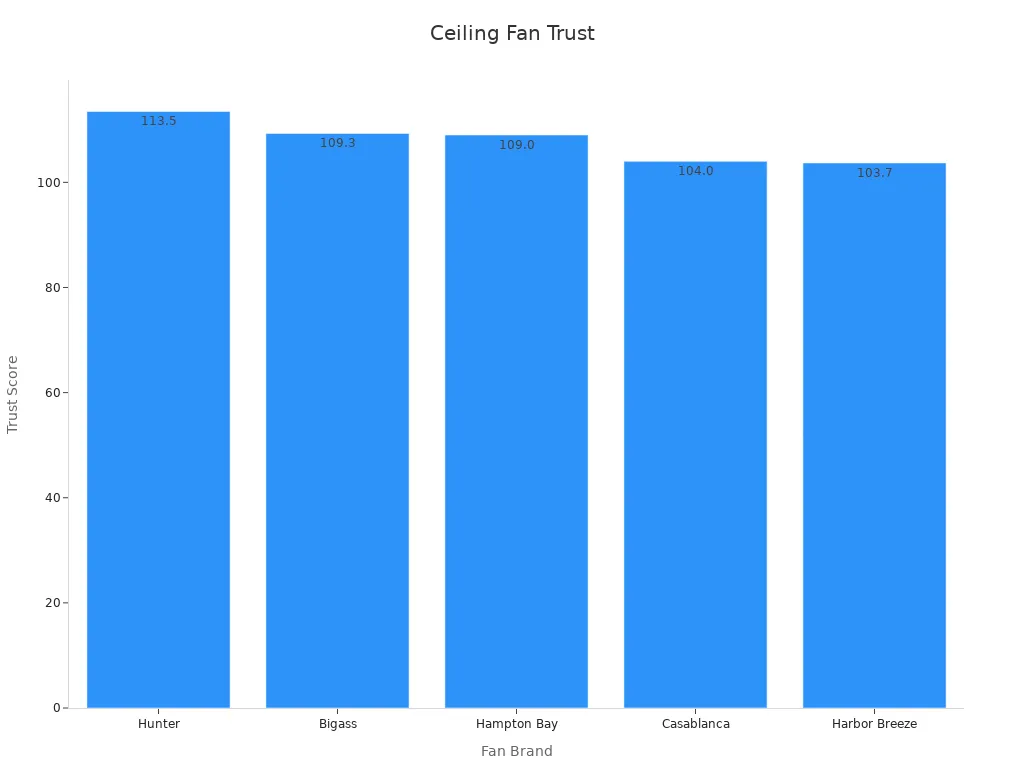
Best Budget Ceiling Fan
You can get great value without breaking the bank. Budget ceiling fans cost much less than high-end models but still offer good airflow and quiet operation for small to medium rooms. Most use AC motors and basic controls, but they are easy to install and maintain. If you want to save money and still enjoy a cool home, a budget ceiling fan is a smart pick.
|
Aspect |
Budget Fans |
Higher-End Fans |
|---|---|---|
|
Price |
$60–$200 |
Up to $900 |
|
Airflow (CFM) |
2,600–4,300 |
5,000+ |
|
Noise |
Quiet |
Virtually silent |
|
Smart Features |
Basic |
Advanced |
Best for Bedrooms
You need a ceiling fan that runs quietly and keeps your bedroom comfortable all night. Experts recommend matching the fan size to your room for the best airflow. Fans with DC motors and remote controls make it easy to adjust speed and direction from your bed. Reversible blades help you stay cozy in winter and cool in summer. Many users say that a quiet operation ceiling fan makes a huge difference in sleep quality.
Tip: Choose a fan with a reversible motor and remote for the best bedroom comfort.
Best for Living Rooms
Living rooms need ceiling fans that move lots of air and look stylish. Fans with high CFM ratings and reversible motors work best for these larger spaces. You can save up to 40% on cooling costs by using a ceiling fan and raising your thermostat. These fans keep air moving, reduce HVAC strain, and help your family stay comfortable year-round.
-
Ceiling fans use less energy than AC units.
-
You can raise your thermostat by 4°F and still feel cool.
-
Consistent airflow improves comfort in large spaces.

Best Smart Ceiling Fan
Smart ceiling fans bring convenience to your home. You can control them with your phone or voice assistant. Most people prefer Wi-Fi fans for easy setup and reliable control. Features like motion sensors and energy tracking help you save even more. Smart fans are perfect if you want the latest tech and hands-free comfort.
-
Wi-Fi and voice control are top features.
-
Local control is more reliable than cloud-only.
-
Most users are happy to pay a little more for smart features.
Best for Large Rooms
Large rooms need ceiling fans with powerful motors and wide blades. Fans with adjustable speeds and strong airflow keep every corner cool. Studies show that higher fan speeds move more air and help circulate it throughout the room. Look for fans with at least 52-inch blades and multiple speed settings for the best results.
-
High speeds create strong airflow cones.
-
Adjustable speeds help balance comfort and air movement.
-
Fans with reversible motors improve year-round use.
Best for Small Rooms
Small rooms need compact ceiling fans that fit the space and provide enough airflow. Flush-mount fans work well for low ceilings. Choose a fan with a blade span of 36–44 inches for the best performance. Quiet operation is key in small spaces, so look for fans with DC motors and simple controls.
Best Ceiling Fans Reviewed
Features and Performance
When you choose a ceiling fan, you want more than just a spinning blade. You want a fan that delivers strong airflow, saves energy, and runs with quiet operation. Modern ceiling fans use advanced motors and blade designs to move air efficiently. Many models now feature DC motors, which use less power and produce less noise. You can find fans with airflow ratings from 2,600 to over 5,000 cubic feet per minute (CFM), giving you plenty of options for any room size.
Ceiling fans must meet strict efficiency standards set by the U.S. Department of Energy. Manufacturers test each fan for airflow, power use, and efficiency at different speeds. You can trust that the numbers you see—like CFM and watts—are accurate. Some fans reach up to 176 CFM per watt, making them a smart choice for energy savings. Fans with integrated lighting and remote controls add even more convenience to your home.
Customer feedback plays a big role in understanding real-world performance. Detailed reports analyze what users like and dislike, from quiet operation to ease of cleaning. These insights help you pick a ceiling fan that fits your needs and avoids common problems. Scientific studies also show that high-efficiency fans can cut power use by half or more compared to older models. You get better comfort and lower bills.
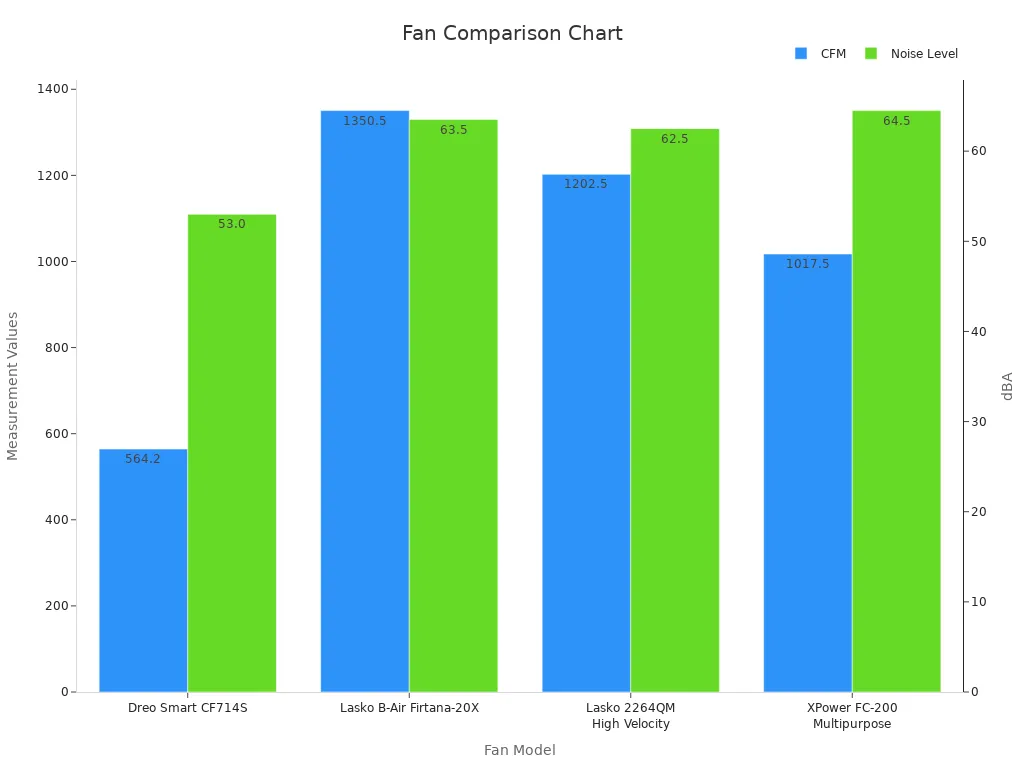
Pros and Cons
You want to know the strengths and weaknesses before you buy. Here is a quick look at how top ceiling fans compare:
|
Model |
Power & Circulation (CFM) |
Noise Level (dBA) |
Cleaning Ease |
Energy Use (kWh/90 days) |
Key Pros |
Key Cons |
|---|---|---|---|---|---|---|
|
564.2 |
53.0 |
High |
31.5 |
Quiet operation, energy efficient, app control, child lock, versatile oscillation |
Lower power compared to larger fans, digital screen less visible |
|
|
High Power Model |
1350.5 |
63.5 |
Moderate |
N/A |
Excellent power, strong airflow for large areas |
Harder to clean due to blade design |
|
Value Model |
1202.5 |
62.5 |
Moderate |
N/A |
Powerful air movement, good value |
Grille reattachment can be tricky |
|
Easy Clean Model |
1017.5 |
64.5 |
Very High |
N/A |
Easy to clean, good power |
Deep fins make some cleaning harder |
Tip: Always check the CFM and noise level before you buy. A ceiling fan with quiet operation and high airflow gives you the best comfort.
Testing teams use real-world methods to measure airflow, sound, and cleaning ease. For example, the quietest model runs at just 53 dBA and uses only 31.5 kWh over 90 days. High-power models deliver strong airflow but may be louder and harder to clean. You can use this table to match your needs with the right ceiling fan.
Best Use Cases
You want a ceiling fan that fits your space and lifestyle. Here are the best ways to use each type:
-
Place a high-efficiency ceiling fan in your living room to keep air moving and save on cooling costs.
-
Choose a compact fan with quiet operation for your bedroom. You will sleep better and enjoy a peaceful environment.
-
Use a smart ceiling fan in your home office or family room. Control it with your phone or voice for hands-free comfort.
-
Install a powerful fan in large rooms or open spaces. Wide blades and high CFM ratings ensure every corner stays cool.
-
Pick a flush-mount fan for small rooms or spaces with low ceilings. You get good airflow without taking up extra space.
Studies show that furniture and partitions can affect how air moves in a room. You should place your ceiling fan where it can circulate air freely. In rooms with obstacles, you may need to adjust the fan’s position or use more than one fan for the best results. Airflow maps and comfort models help you understand how to optimize cooling in any space.
Note: The right ceiling fan can make a big difference in comfort, energy use, and even sleep quality. Match the fan to your room size and needs for the best results.
Choosing a Ceiling Fan
Room Size Guide
You want the right ceiling fan for your space. Start by measuring your room. For rooms over 400 square feet, pick a fan with blades at least 52 inches wide. In smaller spaces, a fan with a 36–44 inch blade span works best. Always install your fan so the blades are 8–9 feet above the floor. Use an extension rod for high or vaulted ceilings. This setup gives you the best airflow and comfort.
-
For large rooms, use a fan with a diameter about two feet less than the smallest wall.
-
In small rooms, a compact indoor ceiling fan keeps air moving without taking up space.
-
Professional installation ensures safe wiring and quiet operation.
Tip: A ceiling fan in the right size improves comfort and saves energy.
Airflow and CFM
CFM, or cubic feet per minute, measures how much air your ceiling fan moves. Higher CFM means more airflow and a cooler feeling. The best fans balance CFM and air velocity. Fan blade pitch, motor type, and blade design all affect airflow. For example, a fan with a 12–16 degree blade pitch and a strong motor creates a powerful breeze. Always match the fan’s airflow to your room size for the best results.
-
Use a fan with high CFM in large rooms.
-
In small rooms, a lower CFM is enough for comfort.
-
Set your fan to spin counterclockwise in summer for a cooling effect.
Mounting Options
Choose a mounting style that fits your ceiling height. Standard mounts work for most rooms. Use a flush mount for low ceilings. For high ceilings, install your ceiling fan with a downrod. This keeps the fan at the right height for good airflow. Always make sure your fan is secure and balanced.
Noise and Quiet Fans
You want a quiet ceiling fan, especially in bedrooms or study areas. Fans with brushless DC motors and aerodynamic blades run quietly. Some fans use special inserts to cut noise by up to 20 decibels. Regular cleaning and proper installation also help reduce noise. Look for fans with noise ratings in dB(A) or Sones for easy comparison.
|
Feature |
Quiet Fan Benefit |
|---|---|
|
Brushless DC Motor |
Less mechanical noise |
|
Aerodynamic Blades |
Reduced vibration and sound |
|
Proper Installation |
Balanced, smooth operation |
|
Remote Control |
Adjust speed without extra noise |
Energy Efficiency
A ceiling fan saves energy by letting you raise your thermostat while staying cool. Using a fan with your AC can cut cooling costs by 15–30%. Energy-efficient fans use less power and help lower your bills. Many homes save hundreds of dollars each year by choosing efficient appliances. Look for fans with energy-saving features and LED lighting for even more savings.
Style and Design
Pick a ceiling fan that matches your home’s style. Modern fans come in many finishes and shapes. Choose metal blades for durability or wood for a classic look. You can find fans with lights, remote controls, and smart features. The right design adds comfort and style to any room.
Remember: The perfect ceiling fan fits your space, matches your style, and keeps you comfortable all year.
Ceiling Fan Features
Lighting Options
Ceiling fans can do more than move air. Many have built-in lights. These lights make rooms bright and comfortable. You can pick LED bulbs that save energy and last longer. LED bulbs give clear light and do not use much power. Some fans let you control the light and fan by themselves. This helps you set the mood or save energy. Smart controls let you change brightness and set timers. You can even connect them to your smart home. This makes it easy to get the right feel in any room.
-
LED bulbs use less energy and last a long time.
-
You can control lights and airflow with switches or smart controls.
-
Smart lighting makes life easier and helps you save money.
Tip: Pick a ceiling fan with LED lights and smart controls. You will use less energy and can change settings easily.
Controls and Smart Features
You should have control over your comfort. New ceiling fans have many ways to control them. You can use a remote, wall switch, or even your voice. With a remote, you can change speed and light from anywhere. You can also reverse the blades with the remote. Smart fans connect to your phone or smart home. You can set times for the fan to turn on or off. Smart controls help move air better and save energy. This makes your home more comfy and healthy.
|
Feature |
Benefit |
|---|---|
|
Remote control |
Change speed and light easily |
|
Smart scheduling |
Set times and save energy |
|
Voice control |
Use your voice for easy changes |
|
Energy monitoring |
See and lower your power use |
Smart features help clean the air and use less power. Remote controls make it simple to get the setting you want.
Blade Direction
You can use your fan better by changing blade direction. In summer, set blades to spin counterclockwise. This pushes cool air down and helps you feel cooler. In winter, set blades to spin clockwise. This brings warm air down from the ceiling. Your room feels warmer without more heat. Many fans let you change direction with a remote. You do not need to climb a ladder.
Note: Use your remote to change blade direction. This keeps you comfy and saves energy all year.
Experts test ceiling fans in labs and real rooms. They measure airspeed, energy use, and comfort. These tests show that the right features really help your home.
Installation and Maintenance
DIY vs. Professional
You might think about installing your ceiling fan yourself. DIY can save money and give you a sense of pride. However, you should know the risks before you start. Many people get hurt by falling from ladders or stools while working at heights. Electrical shocks or burns can happen if you do not handle wiring correctly. You could also get cuts, bruises, or muscle strains from lifting heavy fans or using tools the wrong way.
Professional installation gives you peace of mind. Electricians know how to handle wiring and mounting safely. They finish the job quickly and make sure your fan works right. You avoid mistakes and injuries. If you want easy installation and safety, hiring a pro is the best choice.
Tip: Always turn off the power at the breaker before starting any ceiling fan work.
Cleaning Tips
A clean ceiling fan works better and keeps your air fresh. Dust and pollen on the blades can spread allergens around your room. Dirty blades slow down the fan and make it less efficient. In kitchens, grease can build up and attract even more dust.
Follow these steps for best results:
-
Lay down a drop cloth and set up your ladder safely.
-
Use a cloth, duster, or old pillowcase to wipe off loose dirt.
-
Wash blades with a damp cloth and all-purpose cleaner. Do not spray directly or press too hard.
-
Let the blades dry completely before turning the fan on.
-
For less dust, you can wax the blades with car wax.
Regular cleaning helps your fan last longer and keeps your home comfortable.
Troubleshooting
Sometimes your ceiling fan may wobble, make noise, or stop working. You can fix many problems yourself. Check that all screws and blades are tight. Make sure the fan is balanced. If you hear strange sounds, clean the blades and check for loose parts. If the fan does not turn on, check the wall switch and circuit breaker. For electrical issues, call a professional.
Note: Regular checks and cleaning prevent most problems and keep your fan running smoothly.
You can create a cooler, more comfortable home with the right ceiling fan. Think about your room size, style, and must-have features before you buy. A good indoor ceiling fan saves energy and helps you feel better all year. Ready to upgrade your comfort? Check out the top picks and use this guide to find the perfect ceiling fan for your space.
Make your next ceiling fan choice count—enjoy comfort and savings every day!
FAQ
How do you choose the right ceiling fan size for your room?
Measure your room. For small rooms, use a 36–44 inch fan. For large rooms, pick a 52-inch or bigger fan. The right size gives you better airflow and comfort.
Can you install a ceiling fan by yourself?
You can install a ceiling fan if you follow safety steps. Turn off the power first. Use the right tools. If you feel unsure, hire a professional for safe and quick installation.
Do ceiling fans help in winter?
Yes! Set your fan to spin clockwise. This moves warm air down from the ceiling. You feel warmer and save on heating costs. Use your remote or wall switch to change the direction.
How often should you clean your ceiling fan?
Clean your ceiling fan every month. Dust and dirt build up fast. Regular cleaning keeps your air fresh and your fan running smoothly.
Tip: Use a pillowcase to trap dust when you clean the blades. This keeps your room cleaner!

